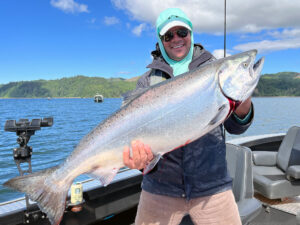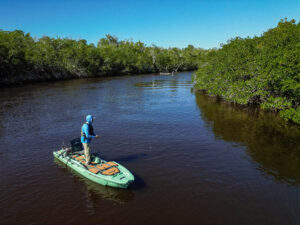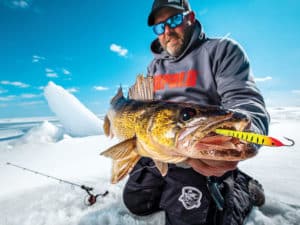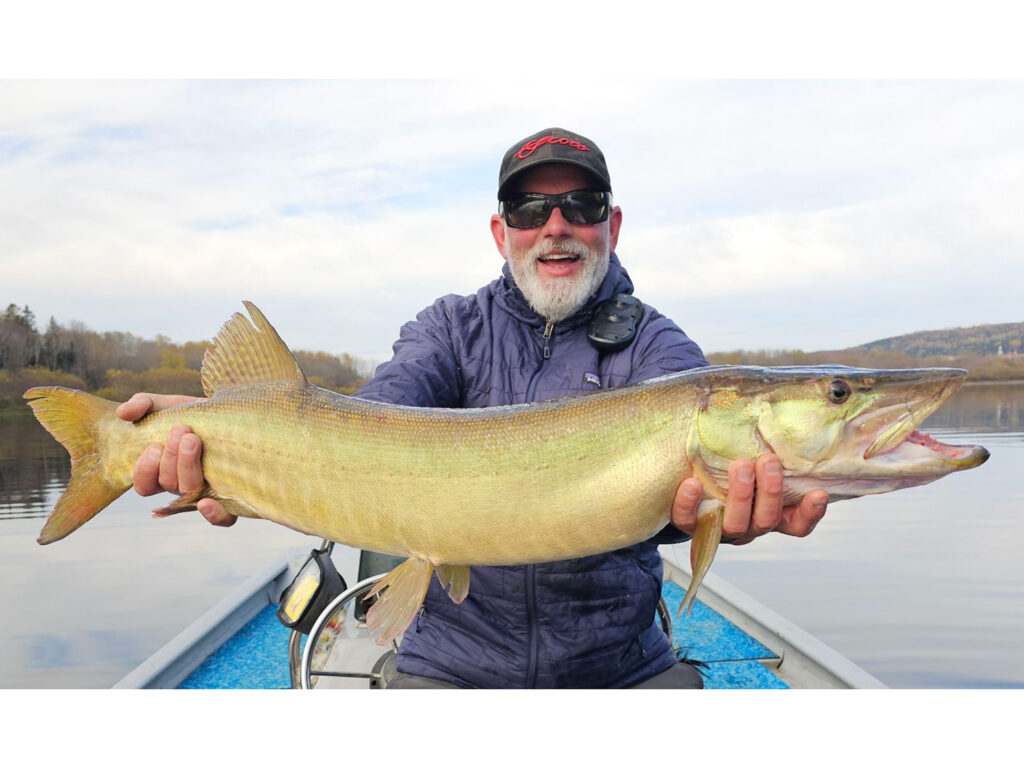
When you think of musky fishing, chances are the northern portions of Maine don’t immediately come to mind. A decade ago, the same could have been said for Kevin McKay, owner and operator of Maine Fishing Adventures, one of the premier musky guide services in the Pine Tree State. After hearing rumblings of muskies making their way into the St. John River, which marks the border between Maine and Quebec, McKay and his son made the trip and quickly realized that the rumors were true, northern Maine is plumb full of muskies.
The Popularity of Musky Fishing
Musky (short for muskellunge) are the ultimate freshwater predators — big, tough and downright elusive. Known as the fish of 10,000 casts, they’re infamous for being hard to catch thanks to their ghost-like behavior and tendency to only feed in specific windows. In fact, many anglers measure a successful musky trip not by what they catch but by how many fish they even see, as these apex predators are known to follow moving baits all the way to the boat.
The stronghold of the musky (sometimes spelled muskie) has long been associated with the Great Lakes, upper Midwest, southern Ontario, and parts of Quebec. Most freshwater anglers have fished or heard about legendary fisheries including Lake of the Woods, Lake St. Clair, Eagle Lake, and the St. Lawrence River. Other targetable populations can be found as far south as the Appalachians.
How Musky Fishing Got Started in Maine
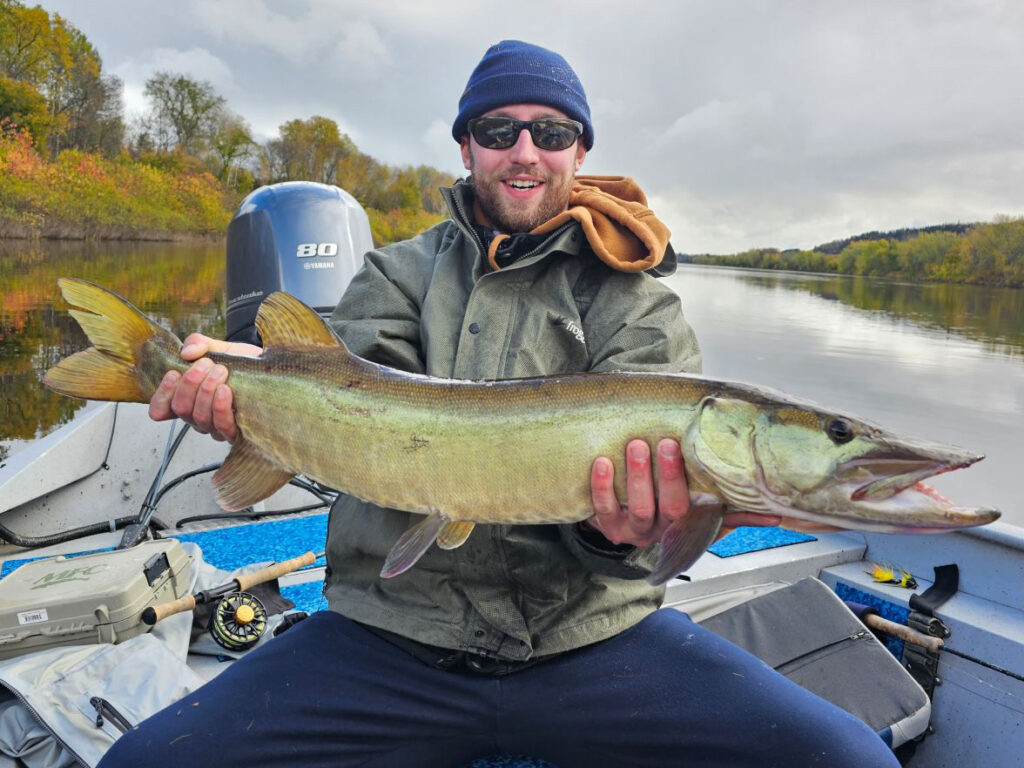
In the 1960s, the Quebec government introduced muskies into Lac-Frontière in the hopes of creating a quality population for province anglers. Over time, these fish began to move downstream into the Maine section of the St. John River, gorging on trout populations and slowly infiltrating the entire system.
As the musky population grew, so did angler interest, culminating in events like the Fort Kent International Muskie Derby, which draws enthusiasts from both sides of the border each August. However, not everyone was thrilled. Some anglers still have concerns. Many Maine anglers view muskies as a threat to the trout and salmon populations that have long defined the state as a premier fishing destination. With no season or bag limits, many fish are killed in an effort to protect native fish species.
According to Kevin McKay, these fish are not going anywhere and are only going to get bigger, “Musky fishing in Maine has the potential to produce fish of over 50 inches,” he says. In addition to the main flowage of the St. John River, other areas of note throughout the watershed are Glazier Lake, Baker Lake, Beau Lake, and the Allagash River.
How to Fish for Muskies in Maine
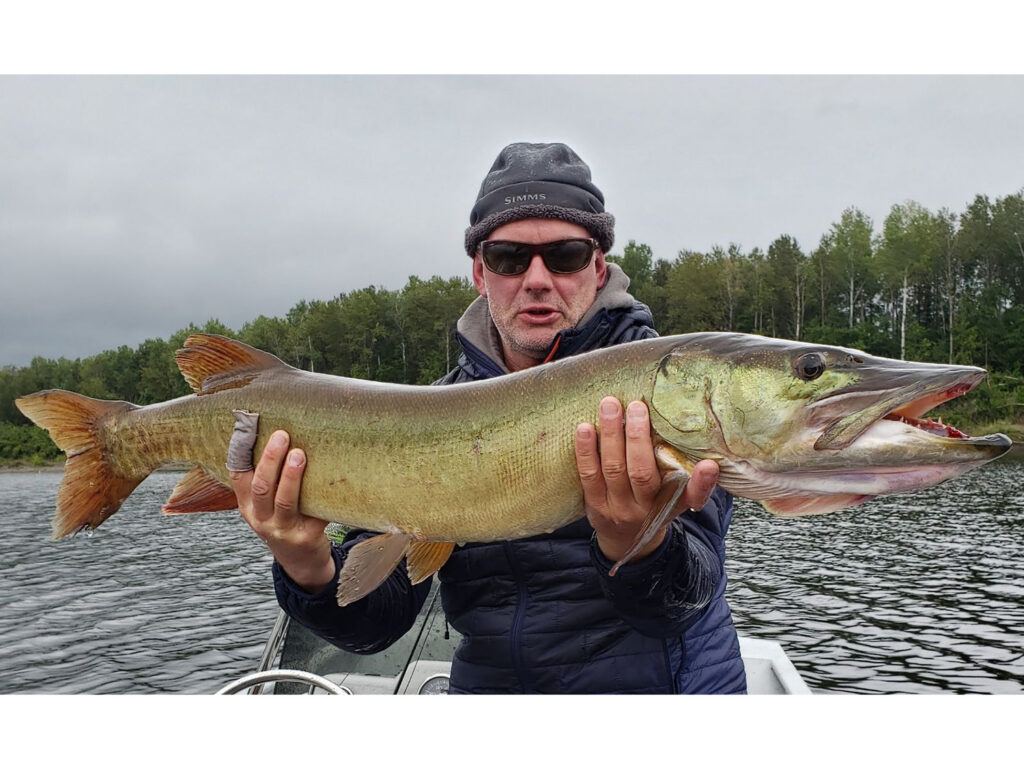
As mentioned above, muskies are predatory fish that grow in excess of 60 pounds, with the bulk of their diet made up of large baitfish such as suckers, chubs, panfish, and ciscoes. This means anglers need to focus on baits such as bladed bucktails, big profiled topwaters, oversized crankbaits, plastic-bodied jerk baits, and other reaction-style baits.
To handle these heavy bait options, anglers should use appropriate rod and reel systems. I recommend heavy casting tackle with rods over 8 feet in length and foregrips long enough to provide plenty of leverage during casting. Rod power and action is up to angler preference and technique. But for baits that require a lot of extra action, some rod options come standard with a pistol-style lower grip.
For reels, classic round styles or beefed-up low-profile models are worthy options. However, gear ratios in the 5:1 to 6:1 are mandatory to keep big baits moving. Additionally, many anglers opt to use braided line down to heavy-duty fluorocarbon or even steel leaders in dirty water environments.
Muskies are known to hold on or near a wide variety of cover with top picks being edges of weed beds, current breaks, wood and offshore rocky structures. Primetime to fish muskies includes cooler water periods of spring and fall, with midsummer heat often correlating to extended periods of lockjaw.
Fly Fishing for Muskies
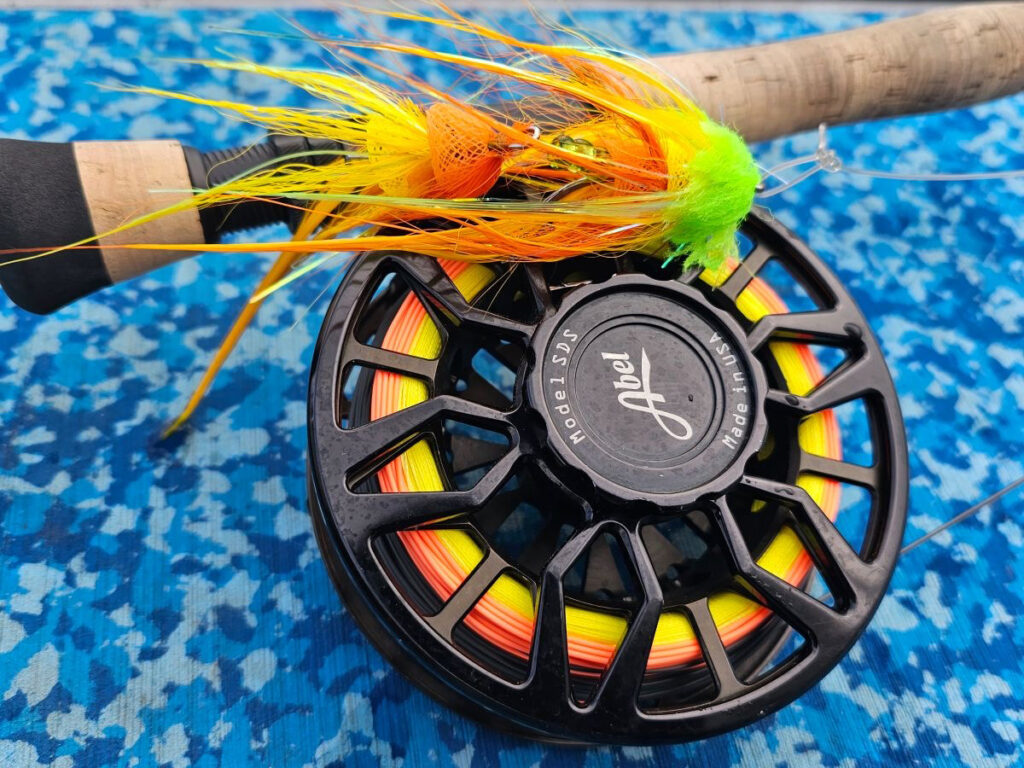
For McKay, the musky has increasingly become a favorite species to target via the fly rod, so much so that it led to a documentary detailing the added difficulty and reward fly fishing for muskies can bring to even the most seasoned angler.
For fly anglers, the same principles apply, bigger is better. Kevin and his clients utilize 10- to 12-weight fly rods with extended fighting butts. Additionally, a heavy 400- to 500-grain line is needed to make powerful and accurate casts. Large articulated streamers in the 6-inch range are commonplace for flies.

